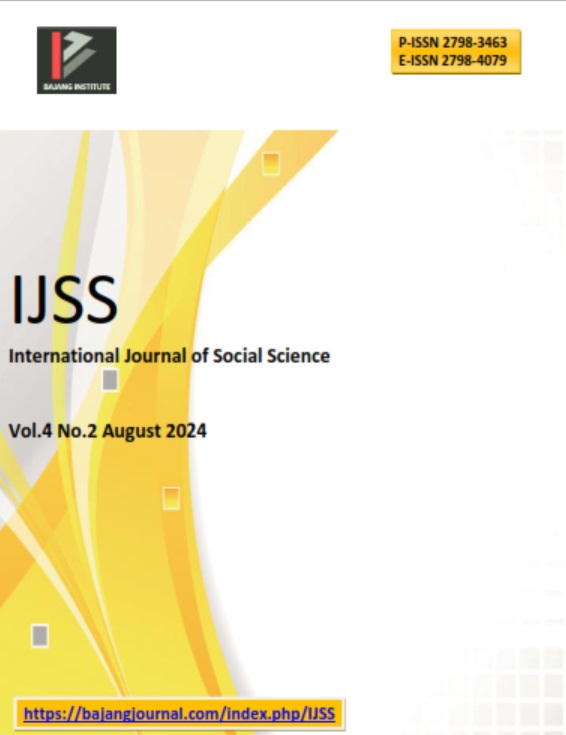EXPLORATION OF RHIZOPORA MANGROVE PLANTS AS FUNCTIONAL FOOD COMPOUNDS FROM THE CUKU NYINYI ECOTOURISM AREA, SIDODADI VILLAGE PESAWARAN REGENCY, LAMPUNG PROVINCE
DOI:
https://doi.org/10.53625/ijss.v4i2.8460Keywords:
Mangrove, Rhizopora, Proximate Analysis, Mangrove Flour, Snack FoodAbstract
This activity was empowerment community programme assisted by CSR PT. Bukit Asam Tbk Pelabuhan Tarahan Lampung. This research is a series of activities in an effort to preserve Mangrove plantation forests in Pesawaran Regency, Lampung province in collaboration with CSR PT. Bukit Asam, Tarahan Pelabuhan Panjang. The specific aim is to explore and screen Mangrove plants that have the potential to be used as food. There were 2 (two) types of Mangrove plants studied, namely the Mangrove species Rhizopora apiculata and Rhizophora mucronata. The first step of the research was to carry out phytochemical screening to identify chemical content and bioactive compounds using qualitative methods, and the bioactive compounds identified were flavonoids, saponins, tannins, tripertenoids and steroids as well as phenolic compounds. The third step is to test the main components of chemical compounds using proximate analysis which include tests for water content, ash content, total fat, protein and carbohydrates as well as crude fiber components. Chemical content test results of proximate analysis of mangrove fruit Rhizopora apiculata and Rhizophora mucronata for water content; ash content; total fat content; protein content; and carbohydrates each one were 64,99; 3,61;8,11; 0,31; 12,49; 22,95 (%) and 64,25; 3,25; 10,67; 0,74; 1,74, 21,10 (%).The aim of the phytochemical test is to determine the presence of secondary metabolite compounds distributed in plant parts. The research continued with trials of making Rhizopora fruit into food products such as sticks and crackers. The overall sensory test results showed a good level of panelist acceptance of snack food substituted with mangrove flour
References
AOAC. 2015. Official Methods of Analysis of the Association of Official Analytical Chemistry International. AOAC Inc. Arlington.
Banerjee S, Ray J, Mukherjee B. 2008. Antioxidant activity and phenolics of some mangroves in Sudarbans. Journal of Biotechnology 7(3): 805-810.
Bialangi, N., Mustapa, A., Salimi, Y., Widiantoro, A. and Situmeang, B., 2018. Isolation of Steroid Compounds from Suruhan (Peperomia pellucida L. Kunth) and Their Antimalarial Activity. Asian journal of chemistry, 30(8) : 1751-1754.
Chew KK, Thoo YY, Khoo MZ, Wan AWM, Ho CW. 2016. Effect of ethanol concentration, extraction time and extraction temperature on the recovery of phenolic compounds and antioxidant capacity of Centella asiacita extracts. International Food Research Journal 18:566-573.
Culvenor, C.C.J. and J.S.Fitzgerald, 1963, A firld Method for Alkaloid Screening of Plants, J. Pharm. Sci., 52(3), 303-304.
Dotulong, V., Wonggo, D., Montolalu, L. A. D. Y. 2018. Phytochemical Content, Total Phenols, and Antioxidant Activity of Mangrove Sonneratia alba Young Leaf Through Different Extraction Methods and Solvents. International Journal of ChemTech Research. Vol. 11 No. 11, pp 356-363.
Friess AD. 2017. Ecotourism as a tool for mangrove conservation. Sumatra Journal of Disaster,1(1): 24-35.
Kamal E. 2011. Fenologi Mangrove (Rhizophora apiculata, R. mucronata dan R.stylosa) di Pulau Unggas, Air Bangis Pasaman Barat, Sumatera Barat. Jurnal Natur Indonesia. 14 (1): 90.
Kasitowati RD, Yamindago A, Safitri M. 2017. Potensi antioksidan dan skrining fitokimia ekstrak daun mangrove Rhizophora mucronata, Pilang Probolinggo. Journal of fisheries and marine science. 1 (1): 72-77.
Noor, Y.R., Khazali, M., & Suryadiputra, I. N. N. 2006. Panduan Pengenalan Mangrove di Indonesia. PHKA/WI-IP. Bogor.
Rahmawaty. 2006. Upaya pelestarian mangrove berdasarkan pendekatan masyarakat. Departemen Kehutanan Fakultas Pertanian Universitas Sumatera Utara. Hal 4.
Setiawan, H. 2008. Pemanfaatan Hutan Mangrove untuk Cadangan Pangan Masyarakat Pesisir. Majalah Penyuluhan Kehutanan Komunikasi Edukasi Wana Lestari. Jakarta.
Sofiyan, A. 2023. Desa Wisata Ekowisata Mangrove Cuku Nyinyi. https://jadesta.kemenparekraf.go.id/desa/ekowisata_mangrove_cuku_nyinyi_1 Diakses pada tanggal 26 Oktober 2023.
Wang, T., Li, Q., Bi, K., 2018. Bioactive flavonoids in medicinal plants: Structure, activity and biological fate. Asian J. Pharm. Sci. 13, 12–23.
Downloads
Published
How to Cite
Issue
Section
License
Copyright (c) 2024 Oktaf Rina, Anggun Rusyantia, Ajis Purnomo, Andi Sofiyan

This work is licensed under a Creative Commons Attribution 4.0 International License.

















